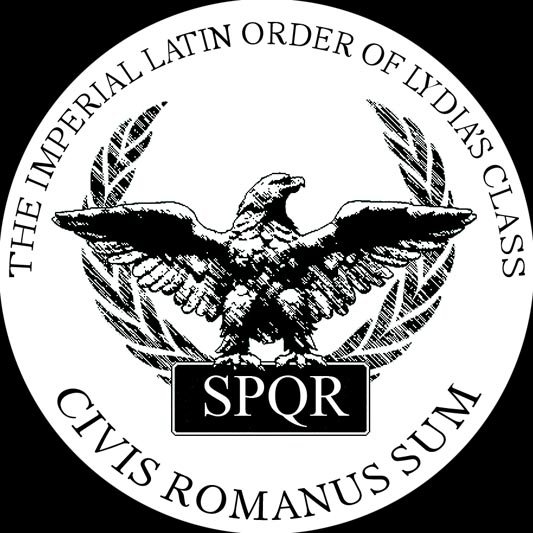
This post relates to my literature class for children at Homeschool Out of the Box co-op in Norfolk, VA. This semester we are reading The Aeneid, using Penelope Lively's book In Search of a Homeland, and other supplemental materials. For other lessons, please click the Aeneid tag at the bottom of this post.
Quiz: Today we took the quiz on the Roman symbols, and remembered that SPQR does not stand for Stand Proud, Quarreling Rodents! and that the crescent and star first represented a bright star, comet, or some other omen in the sky. The kids did a great job! They should continue to look for Roman symbols throughout the semester, as well as phrases that reference Rome, like "Rome wasn't built in a day" and "When in Rome do as the Romans."
Songs: This week we practiced our two songs, "I Sing of Arms and the Man" and "Let's Get the Heck Out of Troy." We spent a fair amount of time in the enrichment class learning "Arma virumque cano, troiae qui primus ab oris" and the children did a really most excellent job. We also began work on "Friends, Romans, Countrymen" and in the academic class we talked about how the unique situation presented by Caesar's funeral made it necessary for Mark Antony to really hide his true meaning in a lot of layers of sarcasm. That's something we'll be talking about more as we go along, but I was impressed with the kids' ability to accomplish this kind of subtle reading.
Fast Facts: Our lesson this week wass about Roman clothing, hairstyles and jewelry. We learned that women don't wear togas and that human urine is just another alkaline chemical, useful in removing dirt and oils from woolen cloth. Neat!
Project: Roman children wore little pouches called bullas around their necks. These pouches contained lucky symbols (and yes, phallic symbols) and other treasures. Fancy ones were gold, some were leather, and ours were very simple pouches made by threading a cord through a circle of fabric.
Materials:
Fabric (I used white cotton with a little bit of lycra in it for stretch)
Cord (About the size of a shoelace)
Sharpies
Treasures
I first handed out small pieces of cardstock for the children to create their lucky charms, and directed them to draw something that was important for them, or something that symbolized one of their interests. One drew a tree, one drew a lucky clover, one drew a sword... we had a lot of variations but I think they got the idea. Sadie drew a diamond (to represent wealth) and a person (to represent her family). Nice! Then the decorated their bullas, strung them on the cords, and drew the strings tight.


I encouraged them to add some different little items when they got home: lego bricks, dried flowers, photographs, candy, leaves, tiny toys, or whatever they feel represents them and brings them luck.
Citizenship Coins:
We talked about how important citizenship was to Romans, and how important citizenship is to us today as well. I gave each of the children a citizenship coin and impressed on them that only citizens of my class will be allowed to participate in the upcoming chariot races, gladiator games, etc. so they should be proud of their citizenship and protect it. Their names are on the backs of the coins. They each get one just for showing up and smiling, but they can earn more for feats of strength and valor, such as memorizing poems, and more. Several precocious children asked me why they'd want more than one. I can only say that if a little citizenship is good, more is better.
Here's what's on the front of the coin:

For next week, please memorize the first line of the Aeneid in Latin. Here's a great video that will help you with that. Also read the second chapter in the book, and for good measure, especially if your child was also in my Odyssey class, you better watch this video:

I love the youtube link for the Aussie guy. We are going to keep watching his Punk Rock Latin classes. Fun fun.
ReplyDeleteThanks for blogging for Aeneid. Em and I are enjoying it!!
ReplyDelete